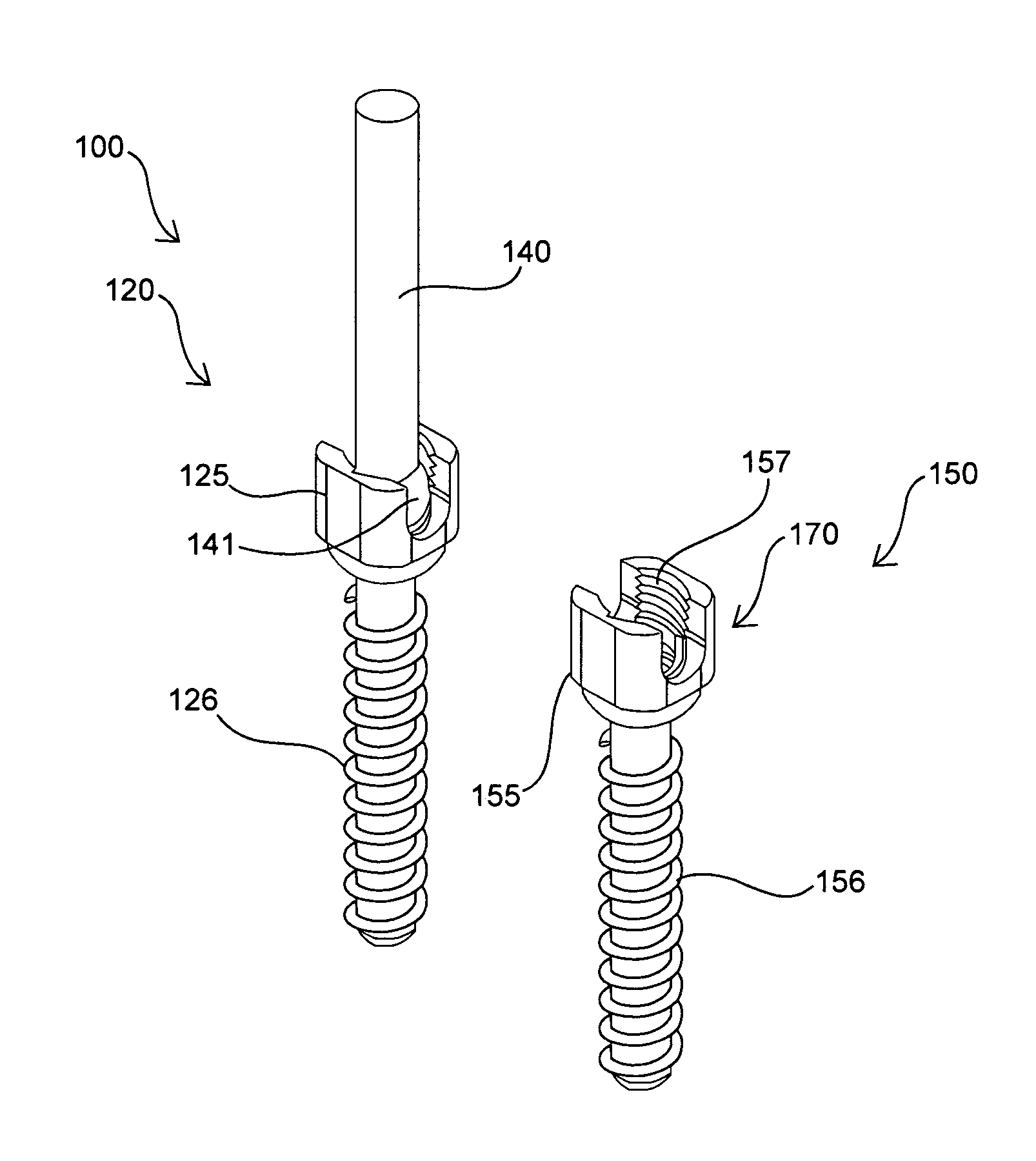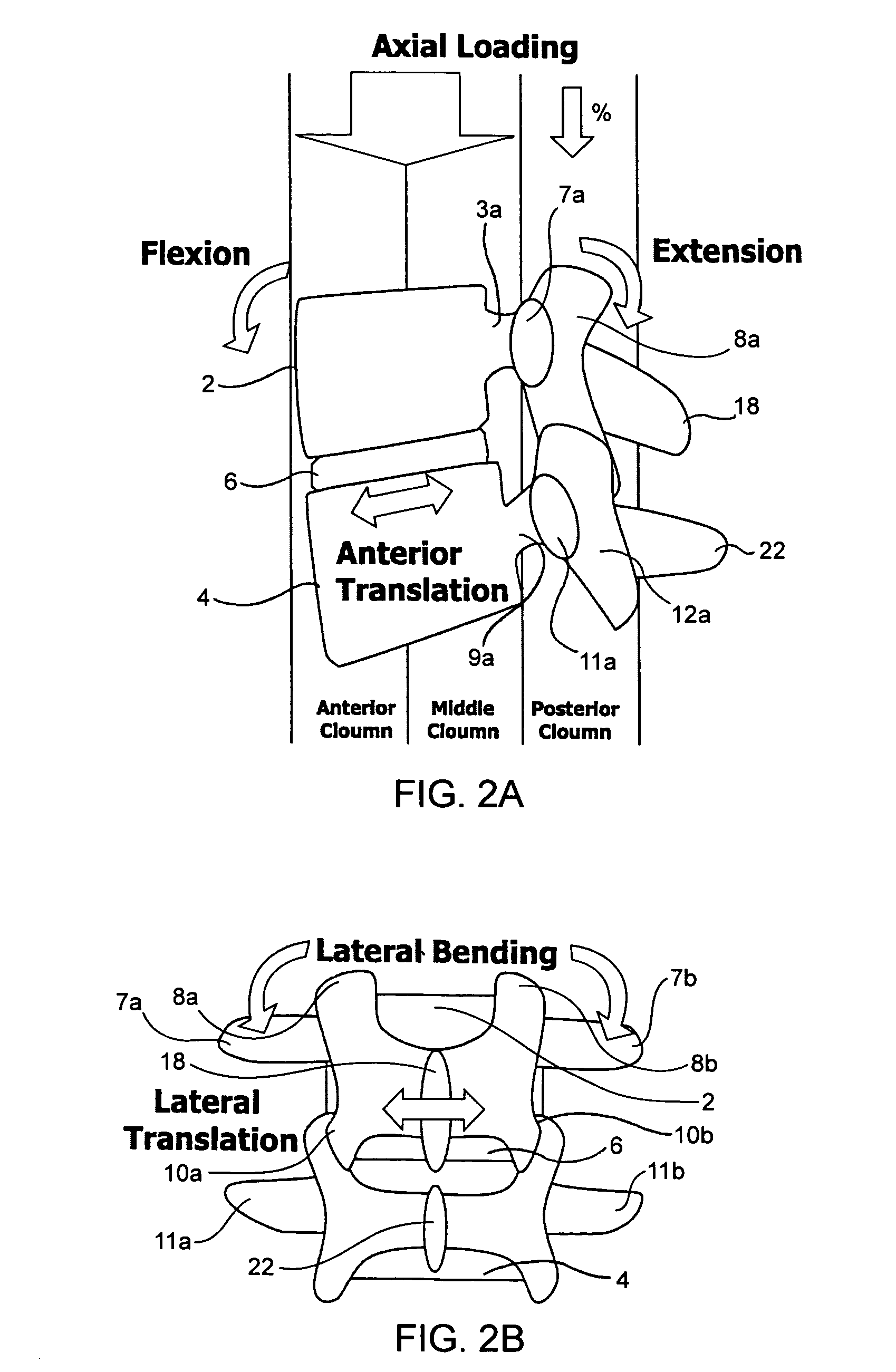These procedures require large incisions and also significant tissue manipulation to adequately expose the areas intended for the attachment.
The procedures are associated with long recovery times and increased potential for adverse events, such as infection, usually associated with muscle and other tissue trauma and scarring.
Currently available minimally invasive techniques and products are limited.
These procedures are difficult to perform, especially in spinal applications in which the attachment points are deeper in tissue, and damage to neighboring tissue must be avoided.
Many of the currently available less invasive products remain somewhat invasive due to component configurations, and required manipulations to be performed during the attachment.
Traumatic, inflammatory, metabolic, synovial, neoplastic and degenerative disorders of the spine can produce debilitating pain that can affect a spinal motion segment's ability to properly function.
Often, a disorder in one location or spinal component can lead to eventual deterioration or disorder, and ultimately, pain in the other.
While spine fusion generally helps to eliminate certain types of pain, it has been shown to decrease function by limiting the range of motion for patients in flexion, extension, rotation and lateral bending.
Furthermore, the fusion creates increased stresses on adjacent non-fused motion segments and accelerated degeneration of the motion segments.
Additionally, pseudarthrosis (resulting from an incomplete or ineffective fusion) may not provide the expected pain-relief for the patient.
Also, the device(s) used for fusion, whether artificial or biological, may migrate out of the fusion site creating significant new problems for the patient.
Unfortunately, the currently available artificial discs do not adequately address all of the mechanics of motion for the spinal column.
It has been found that the facet joints can also be a significant source of spinal disorders and debilitating pain.
Current interventions for the treatment of facet joint disorders have not been found to provide completely successful results.
Facetectomy (removal of the facet joints) may provide some pain relief; but as the facet joints help to support axial, torsional, and shear loads that act on the spinal column in addition to providing a sliding articulation and mechanism for load transmission, their removal inhibits natural spinal function.
Laminectomy (removal of the lamina, including the spinal arch and the spinous process) may also provide pain relief associated with facet joint disorders; however, the spine is made less stable and subject to hypermobility.
Problems with the facet joints can also complicate treatments associated with other portions of the spine.
In fact, contraindications for disc replacement include arthritic facet joints, absent facet joints, severe facet joint tropism, or otherwise deformed facet joints due to the inability of the artificial disc (when used with compromised or missing facet joints) to properly restore the natural biomechanics of the spinal motion segment.
While various attempts have been made at facet joint replacement, they have been inadequate.
This is due to the fact that prosthetic facet joints preserve existing bony structures and therefore do not address pathologies which affect facet joints themselves.
As the lamina is a very complex and highly variable anatomical structure, it is very difficult to design a prosthesis that provides reproducible positioning against the lamina to correctly locate the prosthetic facet joints.
In addition, when facet joint replacement involves complete removal and replacement of the natural facet joint, as disclosed in U.S. Pat. No. 6,579,319, the prosthesis is unlikely to endure the loads and cycling experienced by the vertebra.
Thus, the facet joint replacement may be subject to long-term displacement.
Furthermore, when facet joint disorders are accompanied by disease or trauma to other structures of a vertebra (such as the lamina, spinous process, and / or transverse processes) facet joint replacement is insufficient to treat the problem(s).
Because the interspinous spacers involve attachment to the spinous processes, use of these types of systems is limited to applications where the spinous processes are uncompromised and healthy.
While this system is able to provide load sharing and restoration of disc height, because it is so rigid, it does not effective in preserving the natural motion of the spinal segment into which it is implanted.
 Login to View More
Login to View More  Login to View More
Login to View More 


